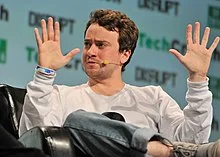
George Hotz
George Hotz, born on October 2, 1989, in Glen Rock, New Jersey, is a renowned American hacker and creative technologist. He gained fame at a young age for being the first person to unlock the iPhone, enabling it to be used with other cellular networks besides AT&T. This achievement, accomplished when he was just 17, showcased his exceptional skills in software engineering and hacking. In 2009, Hotz made headlines again by hacking the PlayStation 3 and subsequently becoming involved in a legal battle with Sony. His work in this area further cemented his reputation as a prominent figure in the hacking community. Beyond hacking, Hotz has a deep interest in artificial intelligence. He founded Comma.ai in 2015, a company focused on developing autonomous driving technology. His work at Comma.ai highlights his commitment to innovative technology and his continued influence in the tech world. Hotz is known for his outspoken and unconventional approach, often sharing his insights and experiences through social media and public appearances.
Books Mentioned on the Lex Fridman Podcast #132 with George Hotz:
Book Title: The Metamorphosis of Prime Intellect
Author: Roger Williams
Author: Neal Stephenson
Book Title: Bronze Age Mindset
Author: Bronze Age Pervert
Exploring the Frontiers of Autonomous Driving: Insights from George Hotz and Comma.ai
In a recent episode of the Lex Fridman podcast, George Hotz, the founder of comma.ai, shared his vision and progress in the autonomous vehicle industry. Hotz, also known as geohot, is recognized for his exceptional programming skills and his unique approach to solving the puzzle of self-driving cars. His company, comma.ai, aims to be to Tesla Autopilot what Android is to iOS, offering a $1,000 device, the comma two, that adds semi-autonomous capabilities to supported cars.
Comma Two: Democratizing Autonomous Technology
The comma two device is an epitome of Hotz’s vision to make advanced driving technology accessible to the masses. Priced at $1,000, it can keep vehicles centered in lanes, even without clear lane markings, and includes driver sensing to ensure driver attention on the road. This device encapsulates the essence of comma.ai’s mission: to deliver affordable and efficient semi-autonomous solutions.
Driver Sensing and Safety
Hotz, a proponent of driver sensing, believes it to be a crucial component that should be integrated into autonomous driving systems like Tesla Autopilot. Driver sensing ensures that the technology assists but does not replace the human driver, maintaining a necessary level of safety and responsibility.
Comma.ai’s Philosophy: Incremental Progress
Unlike other companies in the space aiming for full autonomy, comma.ai focuses on providing shippable intermediaries. This approach not only keeps the company financially viable but also ensures a reality check on their progress. The goal is to solve self-driving incrementally, improving with each iteration.
OpenPilot: Powering the Comma Two
At the core of comma two’s functionality is OpenPilot, a software platform developed by comma.ai. OpenPilot acts as the brain of the device, processing inputs from cameras and executing driving tasks like lane keeping and adaptive cruise control. Its machine learning model, primarily neural network-based, is constantly evolving, learning from user data and disengagements to improve its performance.
The Future of Autonomous Driving According to Hotz
Hotz’s vision for the future of autonomous driving is grounded in the potential of neural networks. He believes that, like in chess where AI has surpassed human abilities, neural networks will eventually solve the complexities of driving. However, he acknowledges that this future might still be a decade away, given the current rate of technological advancement.
Unlocking the Potential of Autonomous Driving: Insights from George Hotz on Lex Fridman Podcast
In an enlightening conversation on the Lex Fridman podcast, George Hotz, the founder of comma.ai, delved into the intricacies of autonomous driving and the future of automotive technology. Known for his programming prowess and innovative approach, Hotz’s insights provide a glimpse into the rapidly evolving world of self-driving cars.
Enhancing Driver Safety with Advanced Technology
A key focus of the discussion was the importance of driver safety in the realm of autonomous vehicles. Hotz emphasized the necessity of integrating driver sensing mechanisms into self-driving systems, highlighting the role of technology in augmenting, rather than replacing, human drivers.
The Evolution of comma.ai and the comma two Device
Hotz detailed the journey of comma.ai and its flagship product, the comma two. This affordable device, aimed at democratizing access to advanced driving technology, symbolizes comma.ai’s mission to offer efficient semi-autonomous solutions at a fraction of the cost of competitors.
The Role of Over-the-Air Updates in Autonomous Systems
Hotz underscored the significance of over-the-air (OTA) updates in the development of autonomous systems. He credited Tesla with popularizing this concept, drawing parallels to the impact of the iPhone in revolutionizing software updates.
Simplifying the Complex: A Pragmatic Approach to Self-Driving
The conversation also touched upon the complexities of autonomous driving. Hotz shared his philosophy of tackling this challenge incrementally, emphasizing the importance of practical, shippable intermediaries in achieving long-term goals.
OpenPilot: The Brains behind comma.ai’s Technology
The role of OpenPilot, comma.ai’s software platform, was highlighted as a crucial component of their technology. Hotz explained how OpenPilot, with its evolving machine learning model, powers the comma two, facilitating core driving tasks and learning from user data.
The Future of Autonomous Driving: A Neural Network Perspective
Looking ahead, Hotz expressed his belief in the potential of neural networks to revolutionize autonomous driving. He drew an analogy to AI in chess, suggesting a future where technology could surpass human abilities in navigating the complexities of the road.
Conclusion: Paving the Way for Autonomous Innovation
The podcast with George Hotz offered valuable insights into the current state and future possibilities of autonomous driving. Hotz’s perspective underscores the importance of a pragmatic, iterative approach in advancing this technology, highlighting the potential of neural networks and the critical role of safety in the journey towards fully autonomous vehicles.






